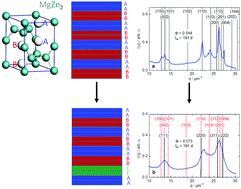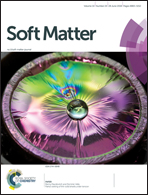Formation of Laves phases in buoyancy matched hard sphere suspensions
Abstract
Colloidal Laves phases (LPs) are promising precursors for photonic materials. Laves phases have not yet been observed to form in experiments on colloidal suspensions of hard spheres (HS), even though they have been reported in computer simulations. LP formation so far has been achieved only for binary mixtures of colloidal charged spheres or ligand-stabilized nano-particles after drying. Using static light scattering, we monitored LP formation and annealing in a binary mixture of buoyant hard sphere approximants (size ratio Γ = 0.77, number or molar fraction of small spheres xS = 0.76) for volume fractions in the fluid-crystal coexistence regions. All samples spontaneously formed MgZn2 type LPs on the time scale of weeks to months via bulk nucleation and growth. Irrespective of the initial suspension volume fractions, the LP volume fraction at coexistence is ΦCOEX = 0.59 which is significantly below the close packing limit ΦMAX = 0.615 and remarkably close to the expectation from simulation. At low volume fractions, crystals anneal to high quality during coarsening which is in line with recent theoretical expectations for the thermodynamic stability of different LP types. At large volume fractions, however, the diffractograms evolve towards a more MgCu2-like appearance which we attribute to the formation of randomly stacked LPs. Such structures are not known from atomic systems.



 Please wait while we load your content...
Please wait while we load your content...